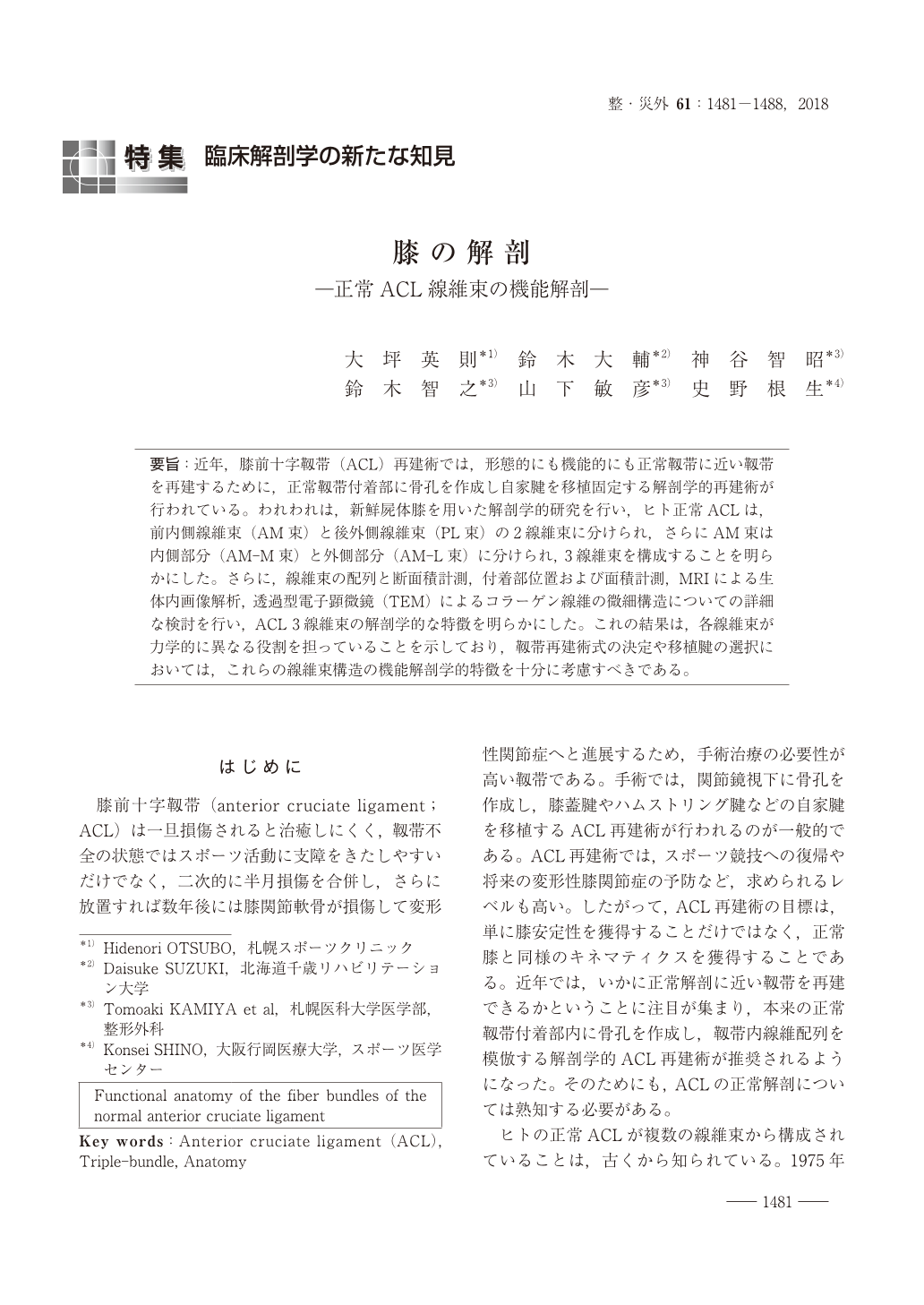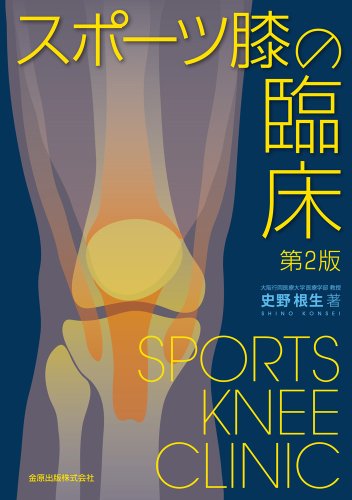1 0 0 0 膝の解剖 -―正常ACL線維束の機能解剖―
要旨:近年,膝前十字靱帯(ACL)再建術では,形態的にも機能的にも正常靱帯に近い靱帯を再建するために,正常靱帯付着部に骨孔を作成し自家腱を移植固定する解剖学的再建術が行われている。われわれは,新鮮屍体膝を用いた解剖学的研究を行い,ヒト正常ACLは,前内側線維束(AM束)と後外側線維束(PL束)の2線維束に分けられ,さらにAM束は内側部分(AM-M束)と外側部分(AM-L束)に分けられ,3線維束を構成することを明らかにした。さらに,線維束の配列と断面積計測,付着部位置および面積計測,MRIによる生体内画像解析,透過型電子顕微鏡(TEM)によるコラーゲン線維の微細構造についての詳細な検討を行い,ACL 3線維束の解剖学的な特徴を明らかにした。これの結果は,各線維束が力学的に異なる役割を担っていることを示しており,靱帯再建術式の決定や移植腱の選択においては,これらの線維束構造の機能解剖学的特徴を十分に考慮すべきである。
1 0 0 0 OA 損傷前十字靭帯の修復過程
- 著者
- 堀部 秀二 有吉 護 阿部 隆伸 平岡 弘二 史野 根生
- 出版者
- West-Japanese Society of Orthopedics & Traumatology
- 雑誌
- 整形外科と災害外科 (ISSN:00371033)
- 巻号頁・発行日
- vol.40, no.1, pp.1-3, 1991-11-25 (Released:2010-02-25)
- 参考文献数
- 4
Healing process of torn human anterior cruciate ligament (ACL) was studied histologically. Torn anterior cruciate ligaments were obtained from 21 patients at primary ACL reconstruction and stained with hematoxylin and eosin. Patients age was from 16 to 40 years. The interval between initial injury and operation ranged from 2 to 30 days. At 2 days after ACL injury, fibroblasts were not seen in the torn ligament and lymphocytes appeared in the injured ligament. Although vascular endothelial capillary buds and fibroblasts appeared around the torn ligament at 11 days, few fibroblasts were seen in it. At 30 days, torn ligament shrank macroscopically and resembled scar tissue with irregular alignment of fibroblast and collagen fiber. In conclusion, torn ligament is not healed probably due to few fibroblasts proliferation.
1 0 0 0 スポーツ膝の臨床 = Sports knee clinic
- 著者
- 中田 研 新城 宏隆 三山 崇英 前 達雄 濱田 雅之 史野 根生 堀部 秀二 越智 隆弘 吉川 秀樹
- 出版者
- 日本結合組織学会
- 雑誌
- Connective tissue (ISSN:0916572X)
- 巻号頁・発行日
- vol.32, no.3, pp.313-321, 2000-09-25
- 被引用文献数
- 2
Meniscus is one of the cartilaginous tissues in the knee joints which plays important roles in joint motion, load transmission or lubrication. It is well known that intrinsic healing of injuredmeniscus is limited even if repaired surgically, and that degenerative joint disease develops following loss of its function. We investigated human and rat meniscus cells in the primary culture to characterize their potential of proliferation and gene expression of matrix proteins (type I, II, III, IX collagens and aggrecan), growth factors (TGF-β1, FGF-2, PDGF-A, IGF-II), and their receptors (TGF-βRI, FGFR1, PDGF-R, IFG-I-R). Furthermore, we studied the effect of these growth factors on cell proliferation. Finally, we investigated the possibility of meniscus transplantation with autogenous meniscus cells. Rat meniscus transplantation model was developed and collagen scaffold was used for meniscus cell seeding. These experiments showed future feasible strategy of meniscus cell therapy for meniscus injuries.

